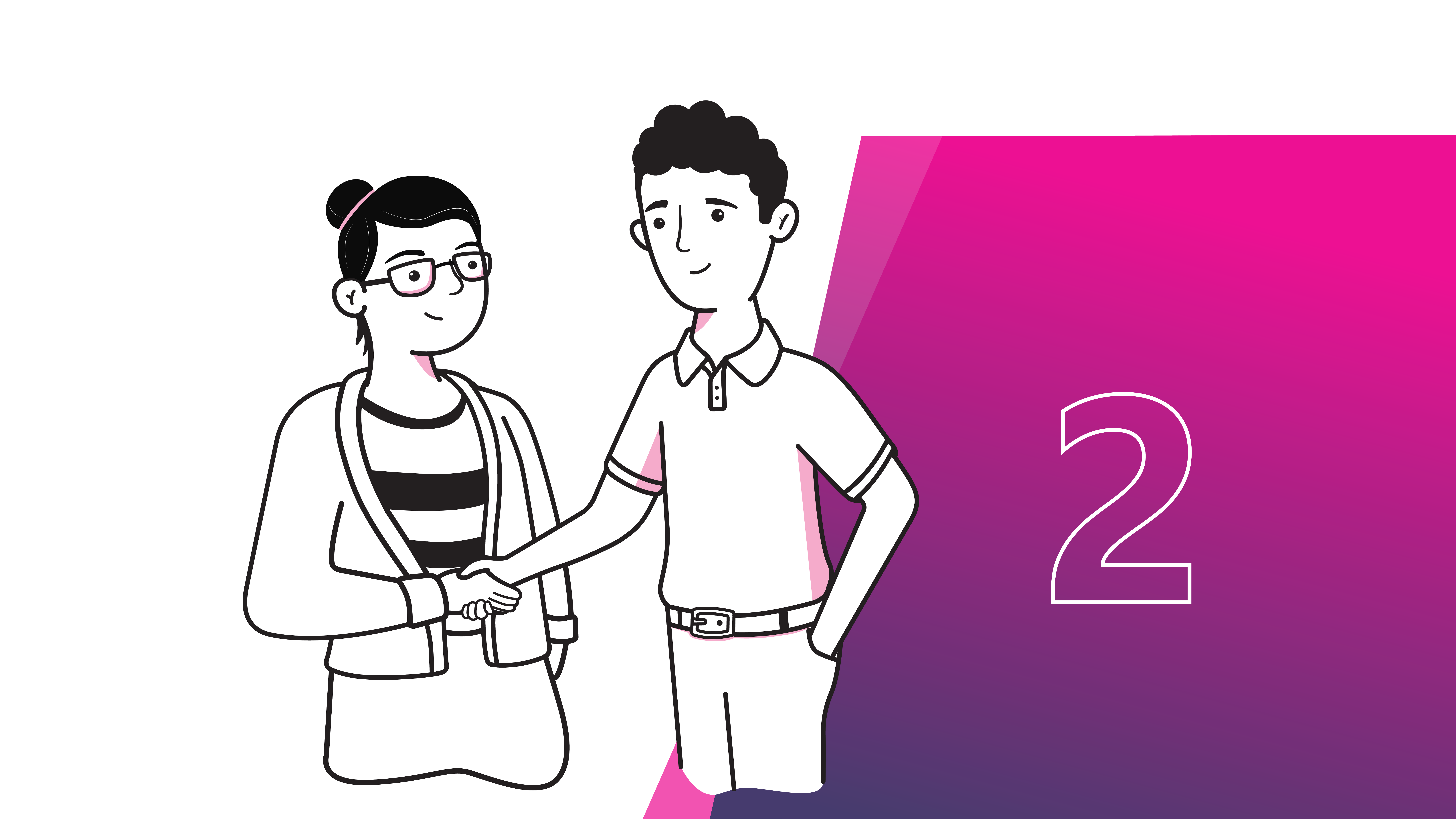9 tangible tips to thrive in daily life
1. Embrace structure with a visual schedule
People living with autism often find comfort and clarity in structure and routine.
One tool you can use to create this structure is a visual schedule.
A visual schedule uses images as visual cues to represent what your daily routine looks like.
You might have a picture of a toothbrush to signify brushing your teeth, or an image of a bus to represent commuting to work.
By placing these images in the order you'll do these activities, you have a visual guide to your day, reducing uncertainty and potential stress.
To create a visual schedule, list down the activities of your day.
This could include meals, work or school tasks, preferred activities, breaks, and self-care routines.
Find images that represent each activity - these could be hand-drawn, printed, or digital images.
Organise these images in the order you plan to do them, placing them somewhere easily visible.
2. Use a visual timer for transitions
Transitioning from one activity to another can be a source of stress for people living with autism.
Visual timers can be an effective strategy to help you manage these transitions.
A visual timer allows you to see how much time is remaining for a specific task or activity, preparing you for the upcoming change. You could use a sand timer, a digital timer, or even an app on your phone. Start by using it for activities you find particularly difficult to transition away from.
Over time, this can make transitions smoother and less anxiety-inducing.
3. Navigate social interactions with social stories
If social interactions aren’t your strength, social situations can sometimes feel like an intricate puzzle.
That's where social stories come in handy.
These are personalised stories that provide insight into different social situations and behaviours that you find daunting, detailing what to expect and why.
To create a social story, first identify a social situation you find challenging, like attending a party or participating in a team meeting.
Write a simple story about that situation, including:
- The social difficulties you might face
- What people might do during that situation
- What appropriate behaviour from you could be, such as verbal responses or types of body language
For example, if attending a party is a stressful experience, your social story might detail what a party looks like, the typical behaviours people exhibit, and how you could react in response.
By preparing beforehand, you can decrease your anxiety and improve your experience with social interactions.
4. Create a safe space
Having a designated safe space at home or work can help manage moments of overwhelming emotions or sensory overload.
This is a quiet, comfortable place where you can retreat to when things get too much.
Your safe space could be a particular room, a corner filled with soft cushions, or even under a desk.
The key is to personalise this space to suit your sensory needs.
You might want to include items that calm you, like a favourite book, sensory toys, or a comforting blanket.
5. Schedule sensory breaks to recharge
Just like everyone else, people living with autism need time to relax and recharge, especially after lots of sensory input or intense social interactions.
Whether in your safe space that you’ve created or outside of it, scheduled sensory breaks can provide this much-needed downtime.
A sensory break is a short period of time when you engage in an activity that calms your senses.
This could be listening to soothing music, having a weighted blanket on, or doing deep breathing exercises.
Regularly scheduled sensory breaks can help manage sensory sensitivities and maintain a balanced mood throughout the day.
6. Incorporate special interests into your daily life
One characteristic of autism is the ability to have deep, intense interests in specific topics or activities.
Leveraging these special interests can make daily tasks more engaging and manageable.
For example, if you love dogs, you might set up a dog-themed visual schedule or use dog analogies when creating social stories.
Incorporating your special interests can make the learning process more enjoyable and effective.
7. Communicate your needs clearly
Clear communication can help to avoid misunderstandings and ensure any special needs you require are met, both socially and professionally.
Your needs are completely unique to you, however some examples of important things you might like to communicate include how you best pick up new skills and what your learning process looks like, what your daily routine entails, how you handle unexpected changes etc.
If verbal communication is challenging, consider alternative methods.
This could be messaging your friends to explain what you need, or writing a letter or email to your team members to describe your needs.
If talking to your employer about workplace modifications is challenging, there are Inclusive Employment Australia providers like APM that can help you out.
Disability Employment Service providers are experts at helping you thrive in your employment, and can help you talk to your employer, every step of the way.
8. Celebrate the wins
Positive reinforcement is a tried-and-tested autism strategy that encourages the repetition of good behaviour by offering rewards, even with yourself.
When you act in a way that meets your goals, celebrate it.
This could be with a favourite activity, a treat, or some sensory downtime.
Over time, these rewards can motivate you to repeat these behaviours, improving your social skills and interactions.
9. Find tools that calm you
Managing sensory input can be a daily challenge when living with autism.
Loud noises or crowded spaces can sometimes lead to sensory overload.
In such cases where you can’t take a break from the situation entirely, sensory tools like noise-cancelling headphones or fidget toys can help you find calm.
Don't shy away from carrying these tools with you. After all, they are as crucial as a pair of glasses for someone with impaired vision.
Ready to get started?
Register now to see if you’re eligible for our, Inclusive Employment Australia program and start your employment journey.
FINDING THE RIGHT JOB FOR YOU
Your personal job plan
APM helps job seekers succeed in their search with tailored job support and guidance.
3 steps to making a positive change in
your life
When you register with APM, we check your eligibility for the program, and help you get started. We guide you through the Centrelink process and your initial assessment, which decides your capacity for employment and suitability for the program.




